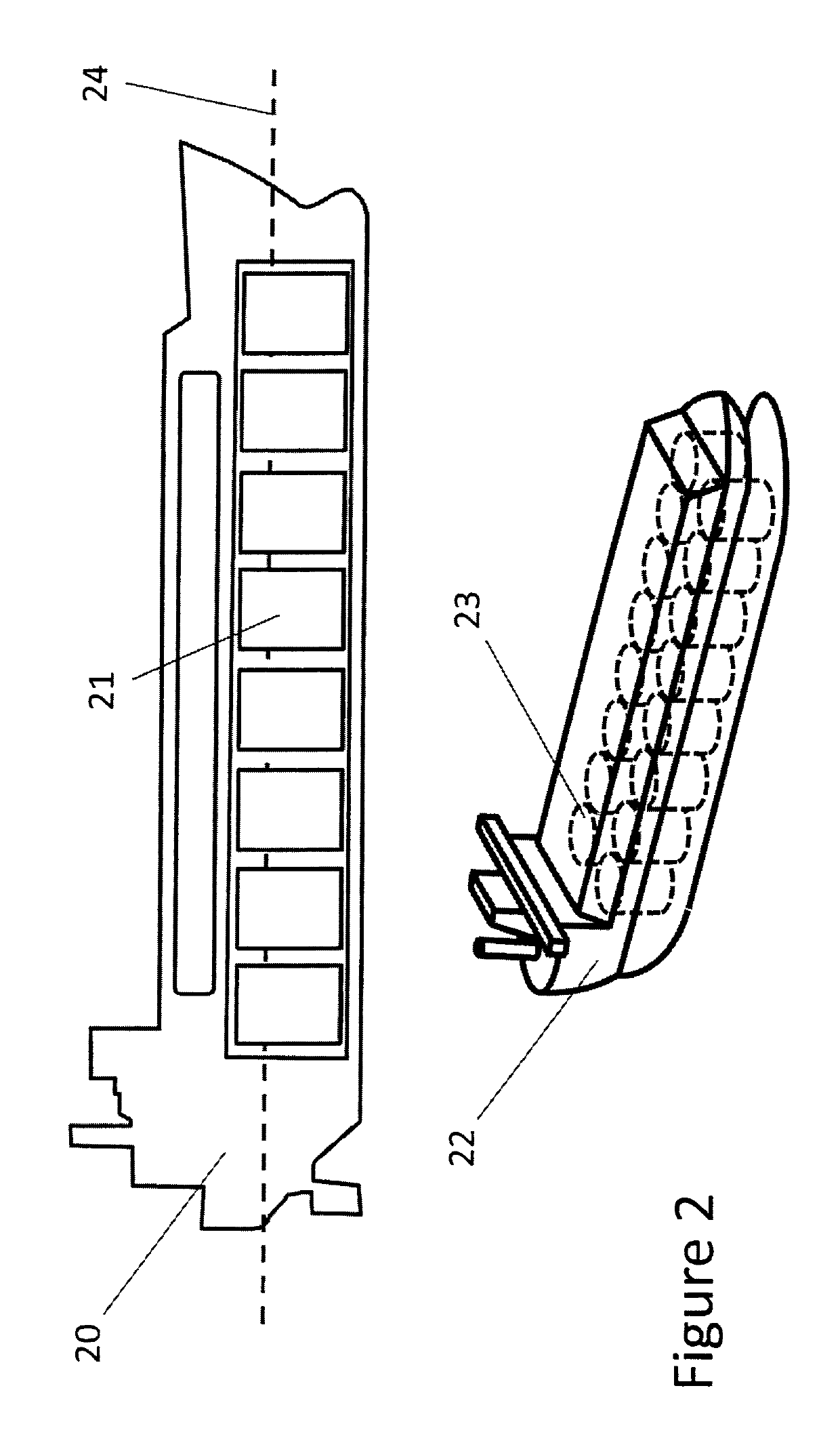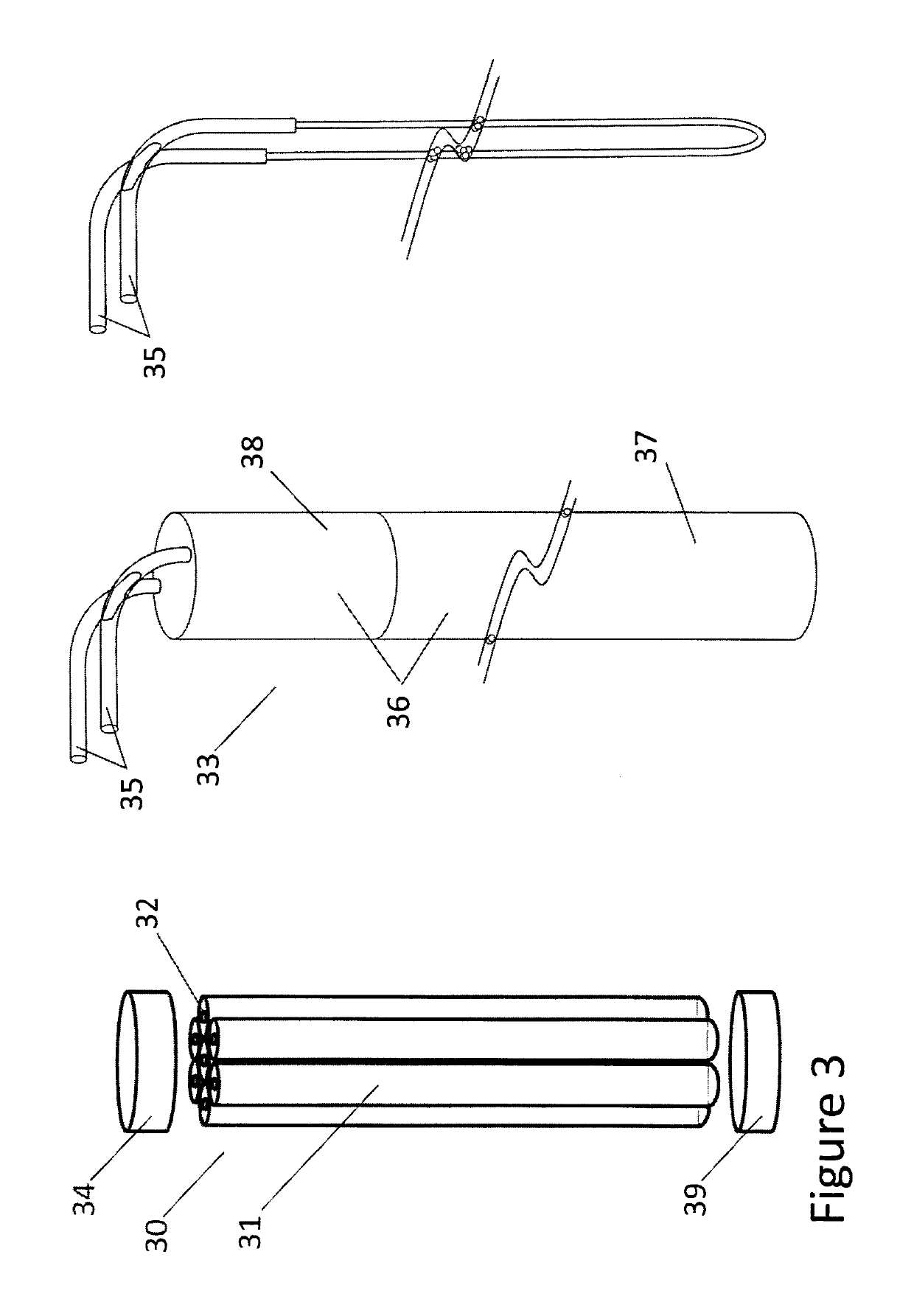High density thermal storage arrangement
a high-density, thermal storage technology, applied in the direction of heat storage plants, driver interactions, railway components, etc., can solve the problems of increasing fossil fuel costs, threatening the economies of nations forced to import much of their energy, and threatening global trade and transportation, so as to reduce the surface erosion
- Summary
- Abstract
- Description
- Claims
- Application Information
AI Technical Summary
Benefits of technology
Problems solved by technology
Method used
Image
Examples
Embodiment Construction
[0041]Renewable and sustainable energy, typically in the form of electrical energy, may be reliably produced for export / transport, depending on geography and climate conditions from solar, wind and geothermal sources. For example, Iceland has year-round sustainable geothermal energy production and in the sunny arid portions of Africa, plenty of land is available with year-round sun, for solar renewable generation.
[0042]A fleet or network of energy transport ships 10 illustrated in FIG. 1 are built to store and transport renewable and sustainable energy containing permanently installed containment modules 11. Each module may be a single integral containment module that is designed to remain as part of the ship. Each containment module houses a graphite core typically consisting of a series of graphite bundles which preferably sits below the waterline 12 to increase ship stability to minimise motion which could damage such core. The ships also contain operating facilities 13 which inc...
PUM
 Login to View More
Login to View More Abstract
Description
Claims
Application Information
 Login to View More
Login to View More - R&D
- Intellectual Property
- Life Sciences
- Materials
- Tech Scout
- Unparalleled Data Quality
- Higher Quality Content
- 60% Fewer Hallucinations
Browse by: Latest US Patents, China's latest patents, Technical Efficacy Thesaurus, Application Domain, Technology Topic, Popular Technical Reports.
© 2025 PatSnap. All rights reserved.Legal|Privacy policy|Modern Slavery Act Transparency Statement|Sitemap|About US| Contact US: help@patsnap.com



